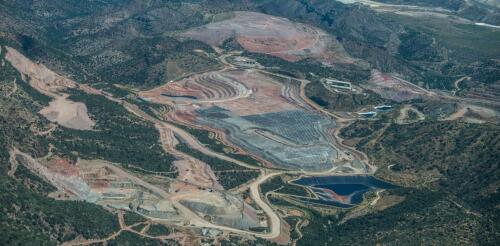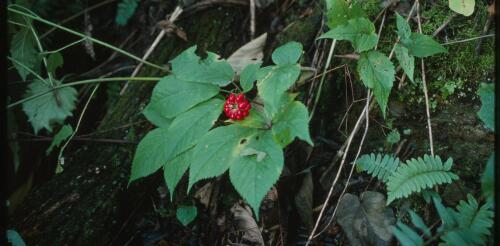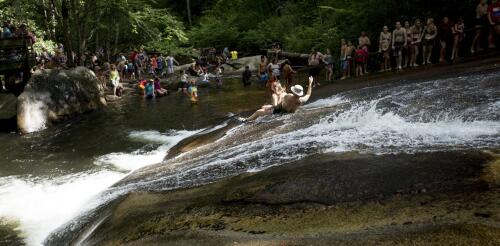Public lands
When Congress opened U.S. public lands for mining in 1872, the nation was less than a century old. Miners used picks, shovels and pressurized water hoses to pry loose valuable minerals like gold and silver. Today, mining is a high-technology industry, but it is still governed by the Mining Law of 1872. As was true 150 years ago, companies can mine valuable mineral deposits from federal lands without paying any royalties to the U.S. Treasury. Even when lands that formerly were available for mining receive new protected status as national parks or monuments, the 1872 mining law protects existing mining claims on those lands. That’s why a company called Energy Fuels Inc. just started mining uranium in January 2024 at a site in Arizona 10 miles from the Grand Canyon and inside a new national monument. Gold prospectors mining at Lake Coeur d'Alene, Idaho, circa 1885. Graphic House/Archive Photos via Getty Images...
Forests are an essential part of Earth’s operating system. They reduce the buildup of heat-trapping carbon dioxide in the atmosphere from fossil fuel combustion, deforestation and land degradation by 30% each year. This slows global temperature increases and the resulting changes to the climate. In the U.S., forests take up 12% of the nation’s greenhouse gas emissions annually and store the carbon long term in trees and soils. Mature and old-growth forests, with larger trees than younger forests, play an outsized role in accumulating carbon and keeping it out of the atmosphere. These forests are especially resistant to wildfires and other natural disturbances as the climate warms. Most forests in the continental U.S. have been harvested multiple times. Today, just 3.9% of timberlands across the U.S., in public and private hands, are over 100 years old, and most of these areas hold relatively little carbon compared with their potential. The Biden administration is m...
Across Appalachia, September marks the start of ginseng season, when thousands of people roam the hills searching for hard-to-reach patches of this highly prized plant. Many people know ginseng as an ingredient in vitamin supplements or herbal tea. That ginseng is grown commercially on farms in Wisconsin and Ontario, Canada. In contrast, wild American ginseng is an understory plant that can live for decades in the forests of the Appalachian Mountains. The plant’s taproot grows throughout its life and sells for hundreds of dollars per pound, primarily to East Asian customers who consume it for health reasons. Because it’s such a valuable medicinal plant, harvesting ginseng has helped families in mountainous regions of states such as Kentucky, West Virginia, Tennessee, North Carolina and Ohio weather economic ups and downs since the late 1700s. Most harvesting takes place in Appalachia’s long-enduring forest commons – forests across the region that histo...
Outdoor recreation is on track for another record-setting year. In 2022, U.S. national parks logged more than 300 million visits – and that means a lot more people on roads and trails. While research shows that spending time outside is good for physical and mental health, long lines and gridlocked roads can make the experience a lot less fun. Crowding also makes it harder for park staff to protect wildlife and fragile lands and respond to emergencies. To manage the crowds, some parks are experimenting with timed-entry vehicle reservation systems and permits for popular trails. For all of their popularity, national parks are just one subset of U.S. public lands. Across the nation, the federal government owns more than 640 million acres (2.6 million square kilometers) of land. Depending on each site’s mission, its uses may include logging, livestock grazing, mining, oil and gas production, wildlife habitat or recreation – often, several of these at once. In con...
A 23-year western drought has drastically shrunk the Colorado River, which provides water for drinking and irrigation for Wyoming, Colorado, Utah, New Mexico, Arizona, Nevada, California and two states in Mexico. Under a 1922 compact, these jurisdictions receive fixed allocations of water from the river – but now there’s not enough water to provide them. As states try to negotiate ways to share the decreasing flow, the U.S. Department of the Interior is considering cuts of up to 25% in allotments for California, Nevada and Arizona. The federal government can regulate these states’ water shares because they come mainly from Lake Mead, the largest U.S. reservoir, which was created when the Hoover Dam was built on the Colorado River near Las Vegas. These five articles from The Conversation’s archive explain what’s happening and what’s at stake in the Colorado River basin’s drought crisis. The Colorado River prov...




